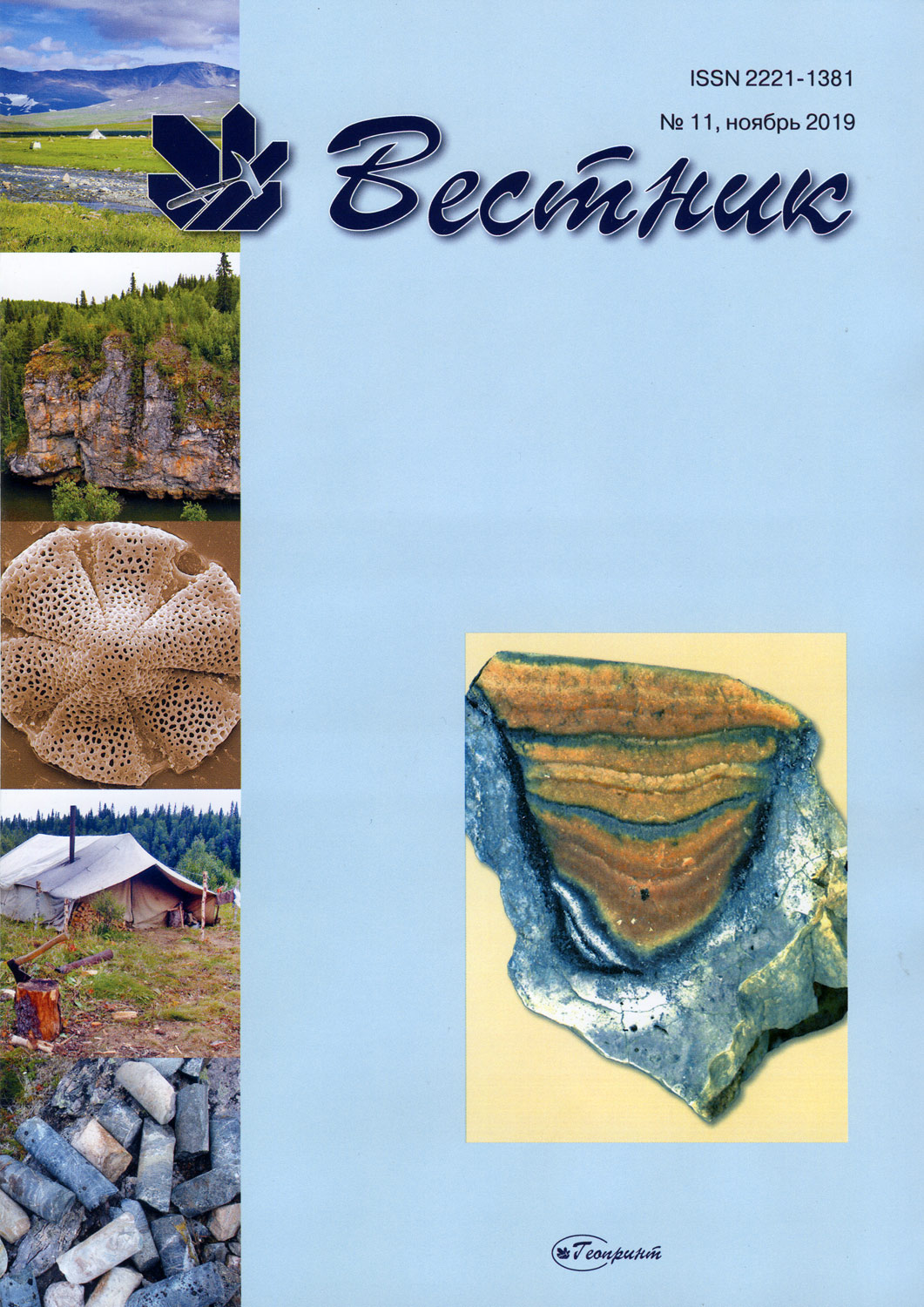pdf № 299, November
562 downloads

|
2 |
|
|
|
|
|
Scientific articles |
|
New schemes of isobases of uplift of northeastern
|
3—8 |
|
DOI: 10.19110/2221-1381-2019-11-9-19 The Upper Kellwasser Event is recognized for the first time in the deep-water succession of the Kozhym River section on the Western slope of the Subpolar Urals, based on conodont biostratigraphy, lithological changes and positive shifts of the carbon isotope value (d13C) across the Frasnian-Famennian (F-F) boundary interval. Conodonts are abundant in the Frasnian Upper rhenana Subzone, but show a low diversity at the level of transgressive Upper Kellwasser Event in the linguiformis Zone, and are almost absent in the Famennian subperlobata Zone. Black shale horizons associated with the global Upper Kellwasser Event were identified in the linguiformis Zone in the Kozhym River section. Positive shifts in the carbon isotope ratio during the linguiformis Zone to the Lower triangularis Subzone (lower part) are observed, similar to those reported from elsewhere around the world (positive d13Ccarb shifts ~ from 3 to 4 ‰). The data obtained allow the black shales associated with the Upper Kellwasser Event and carbon isotope fluctuations to be precisely dated and correlated. Keywords: conodonts, Upper Kellwasser Event, Frasnian-Famennian boundary, Subpolar Urals, Kozhym River section. |
9—19 |
|
DOI: 10.19110/2221-1381-2019-11-20-24 In recent years much new data have been obtained regarding the earliest trees, and their ecology in early forest ecosystems. Aspects of this new data are summarised below, concentrating on the Mid Devonian and earliest Late Devonian, c. 390—380 million years ago, before the dominance of Archaeopteris. The arborescent cladoxylopsids, archaeopteridaleans and lycopsids are considered, as well as the recumbent but large woody aneurophytes. Until now, cladoxylopsid dominated forests, cladoxylopsid/aneurophyte forests, early Archaeopteris, and lycopsid forests are the four forest types identified, largely on the basis of near coastal, wet environments. True in situ fossil forests are extremely rare during this time interval. Future research aims to identify further forest types, to better understand their relationship to palaeogeography and sedimentary environment, and to spread the understanding of early forests beyond the Old Red continent. Keywords: palaeobotany, forest ecology, Lycopsida, Aneurophytales, Archaeopteridales, Cladoxylopsida. |
20—24 |
On the creation of the International Mineralogical
|
25—31 |
|
Forum of young researchers |
32—33 |
|
At the origins of the fluorite province discovery |
34—36 |
|
Geologist’s destiny |
36—38 |
|
Remembering A. F. Kunts |
38—39 |
|
New editions |
39—40 |
- 8(8212)24-53-53
- institute@geo.komisc.ru
- Mon.-Fri. 8.00-17.00












